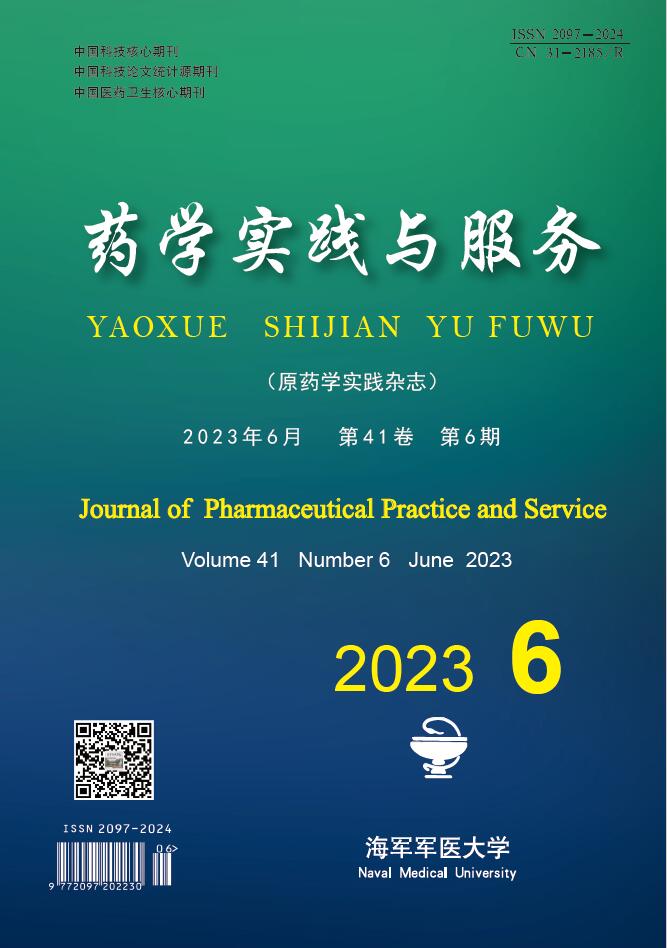-
念珠菌为条件致病真菌,可寄居于人体的不同部位,当人体局部或全身免疫力下降时,其致病性可造成个体浅表或全身感染。白念珠菌(Candidaalbicans)是念珠菌的一种,是引发侵袭性感染的最主要致病菌[1]。近年来,由于抗真菌药物的大量使用,白念珠菌的耐药性逐渐增加。常规抗菌药对白念珠菌的抑制效果明显降低。
相对于单药而言,多种药物联合使用时往往能通过药效互补,起到协同作用,增强抑菌效果[2-3]。联合用药提高了抑菌效果,患者的治疗周期缩短,治疗成本可进一步降低。因此,研究抗白念珠菌药物联合疗法对于治疗白念珠菌感染非常有意义。
一般来说,联合疗法会同时使用抗真菌药和增效剂。目前经典的抗真菌药物有唑类化合物(如氟康唑)、多烯类(如两性霉素B)和棘白菌素类(如卡泊芬净)等,这些药物可直接抑制或杀伤白念珠菌。氯法齐明、法尼醇本身对真菌没有直接抑制作用,但可作为增效剂辅助增强抗真菌药物治疗效果,增强耐药菌的敏感性。近年来,光动力学、声动力学疗法等新兴的技术应用于抗真菌的治疗,同时传统的抗真菌物质在现代技术的改进下也能发挥特有的优势,比如将银制成纳米银颗粒用于抑制白念珠菌增殖。本文将针对白念珠菌尤其是耐药菌的杀伤或抑制作用,聚焦于传统抗真菌药物与声动力学/光动力学疗法、纳米银颗粒这几类抗菌方式,阐述与之相关的联合疗法。
-
氟康唑、酮康唑、咪康唑等唑类化合物是治疗白念珠菌感染的经典药物,具有毒性相对较低、制备技术成熟等优点。但随着临床治疗疗程变长以及使用频率的增多,白念珠菌的耐药性也越来越严重,单独使用唑类化合物的药效大大降低[4]。研究表明白念珠菌对唑类化合物耐药性主要由以下几种机制引起:唑类药物靶点ERG11过度表达降低了白念珠菌的敏感性;ERG11突变导致与唑类化合物的亲和力降低;细胞膜外排泵表达增加,将唑类药物排出细胞外;ERG3突变避免了氟康唑处理后有毒副产物在细胞内的积累;生物被膜物理隔离了白念珠菌胞体和抗真菌药物的接触[5]。尽管单独使用唑类药物应对耐药菌的效果并不理想,但作为传统的抗真菌药物,其作用机制较为明确,在与其他类型的抗真菌药物或疗法的协同作用下,仍发挥较强的抗真菌效果。
-
真菌生物被膜是白念珠菌产生耐药性的重要原因之一。有实验表明,高浓度的酪醇、法尼醇(合金欢醇)等群感效应分子与氟康唑联合使用,可以起到抗真菌被膜的效果,提高白念珠菌对药物的敏感性[6]。白念珠菌对氟康唑等药物耐药的另一个重要机制是其细胞上的外排泵蛋白。对白念珠菌转运泵活性的抑制可增加真菌胞内药物的浓度,以达到抑制或杀灭真菌的目的。研究发现,法尼醇、盐酸氨溴索具有抑制ATP结合转运蛋白的功能,与氟康唑联用可达到抑制氟康唑耐药菌的作用。法尼醇单独使用时还可以诱导氟康唑抗性白念珠菌产生细胞内活性氧,促使其发生凋亡[7]。
-
天然化合物在联合用药中也可以发挥重要作用,将其与常规药物结合可以成为应对耐药菌的有效策略。部分生物碱类,如以小檗碱及其衍生物为代表的异喹啉生物碱以及依波加因等吲哚生物碱,尽管在单独使用没有抗真菌功效,但当其与氟康唑联合使用时有克服白念珠菌对氟康唑耐药的效果[8-9]。还有一些化合物,例如,没食子酸、土槿皮乙酸,单独使用时即表现出抗真菌作用,与氟康唑联合使用可明显降低氟康唑的最低抑菌浓度[10-11]。此外,壳聚糖也具有一定的抗真菌效果,可以通过抑制染色质重塑复合物SAGA表达来影响白念珠菌细胞壁和细胞膜的形态[12]。氟康唑联合壳聚糖,有协同抗真菌活性[13]。得益于壳聚糖的细胞亲和性、生物降解性、低毒性、制备技术成熟等优势,氟康唑与壳聚糖的联合应用具有很大潜力。同时,中药方剂黄连解毒汤与氟康唑联用,通过抑制麦角甾醇相关基因,破坏白念珠菌生物被膜的形成,为抗真菌治疗提供了研究思路[14]。除此之外,一些皮质类固醇,例如地塞米松、布地奈德等药物,也能增强白念珠菌对氟康唑的敏感性[15-16]。
-
钙调磷酸酶在真菌细胞形态、耐药性等多个生理方面发挥着重要作用[17]。氟康唑与FK506、环孢素A等钙调磷酸酶抑制剂联合使用,可以有效降低白念珠菌对氟康唑的耐受性。一方面,氟康唑抑制白念珠菌麦角甾醇的合成,使钙调磷酸酶抑制剂更容易进入白念珠菌细胞内;另一方面,钙调磷酸酶抑制剂增强了氟康唑的药效,使其从抑菌效果转为杀菌效果。两者联用能破坏白念珠菌的生物被膜,增强了抗真菌效果[18]。
-
HSP90是一类与白念珠菌毒力和耐药性密切相关的分子伴侣,可以促进外排泵Cdr1的高表达,增强白念珠菌排出唑类药物,还可以通过一系列级联反应诱发白念珠菌对唑类耐受[19]。因此,抑制HSP90活性是提高白念珠菌对唑类化合物敏感性的有效途径之一。HSP90抑制剂Ganetespib可以下调氟康唑作用的靶酶ERG11和白念珠菌外排泵基因CDR1的表达,有抗生物被膜的效果,与氟康唑在体外联合使用时具有抗真菌活性[20]。除此之外,一些其它的HSP90抑制剂,如格尔德霉素,也可以和氟康唑起到协同作用[21]。针对真菌HSP90设计制备的人类基因重组抗体Mycograb与氟康唑的协同效果仅局限于敏感菌,但当其与两性霉素B联合使用时却能对部分耐药菌表现出一定的协同作用[22]。
-
两性霉素B是经典的多烯类抗真菌药物,具有杀菌活性,但对人体不良反应较多。两性霉素B可以与成熟真菌细胞的细胞壁和出芽产生的子细胞的质膜结合,破坏真菌细胞膜,从而发挥抗真菌效果[23]。相对唑类药物而言,两性霉素B耐药发生的情况较少,目前主要面临的问题在于两性霉素B的毒性较大,尤其是对肝肾功能不全的患者有较大的副作用。所以在选择与两性霉素B联合使用的药物时,既要考虑抑菌效果又要考虑药物毒性,在联合使用时最好是能够通过低剂量两性霉素B达到较好效果,以降低其毒性产生的影响。为了降低两性霉素B对人体的毒性,常用的是采用结合脂质体的方法,将两性霉素B包埋在脂质体试剂中。脂质体可以高效地介导两性霉素B与真菌结合,在减少两性霉素B副反应的同时,还提高了其转移至真菌细胞内的效率[24]。两性霉素B和5-氟胞嘧啶联合是临床常用方法,具有更好的抗真菌功效,而且相比于单独使用两性霉素B,两者联合可小幅度降低两性霉素B的毒性[30]。
一些具有抗真菌效果的化合物可能同时具有低毒性的优势。天然化合物丁香酚可以作为渗透酶抑制剂影响白念珠菌的生长形态并阻断Ca2+通道,将其与两性霉素B同时使用时能够引起白念珠菌细胞内活性氧含量的升高,线粒体损伤,胞质内细胞色素C含量升高,导致细胞损伤。相对于单独发挥抗菌效果的两性霉素B,该组合有效降低了两性霉素B的使用剂量,降低了毒副作用[25]。 1,3,4-噻二唑衍生物4-(5-methyl-1,3,4-thiadiazole-2-yl) benzene-1,3-diol(C1化合物)可与白念珠菌的细胞壁发生作用,影响其完整性,诱发形态紊乱。研究表明,C1化合物与两性霉素B显示出了强烈的协同作用,将100%抑制病原真菌所需的两性霉素B用量降低了10倍甚至几十倍,而且针对正常人皮肤成纤维细胞(NHDF)的细胞毒实验表明,高浓度的C1化合物并不会对其产生细胞毒效应[26]。
与其他非抗真菌药物联合使用以增强抗真菌效果的方法对两性霉素B同样适用。近年来,已经有团队研发了Simpotentin、Nectriatide、Polyketide glycosides phialotides等两性霉素B活性增强剂,临床前阶段的实验表明,这些两性霉素B活性增强剂可以有效地降低两性霉素B的用量[27-29]。
-
棘白菌素是一类β-1,3-D-葡聚糖合酶抑制剂,可以干扰白念珠菌细胞壁的形成,随着其临床上的广泛应用,有越来越多的耐药菌被分离出来。白念珠菌编码葡聚糖合酶亚基的FKS基因突变、真菌生物被膜的形成、应激适应等多种因素均可能引发棘白菌素耐药,通过联合疗法有可能解决耐药问题[31]。
-
尼可霉素Z是一种几丁质合酶抑制剂,同β-1,3-D-葡聚糖一样,几丁质也是真菌细胞壁的重要组成成分。当棘白菌素类药物抑制白念珠菌β-1,3-D-葡聚糖合成时,白念珠菌有可能通过上调几丁质的合成,减轻棘白菌素对细胞壁的损伤,降低对棘白菌素的敏感性[32]。如果在使用棘白菌素类药物卡泊芬净或米卡芬净的基础上同时使用尼可霉素Z,则可以同时抑制β-1,3-D-葡聚糖和几丁质的合成,有效抑制白念珠菌的生长[33]。
-
由于棘白菌素与唑类化合物抑制白念珠菌的机制不同,将两者联合使用增强对棘白菌素耐药菌的抑制作用。当棘白菌素与泊沙康唑联合使用时,对白念珠菌SC5314的分级抑菌浓度(FIC)<0.5,表明两者联合使用时具有体外协同抗真菌活性[34]。
-
氯法齐明是传统的抗分枝杆菌药物,尽管不是抗真菌药物,但研究发现,当氯法齐明与一些其他抗菌类药物联合使用时,具有广谱的抗真菌活性,因此有作为联合药物应用于抑制传统耐药菌增殖的潜力。有研究表明,氯法齐明分子的疏水结构可以嵌入到白念珠菌的膜双层的烃相中,通过非特异性膜扰动发挥对白念珠菌的抑制作用。当卡泊芬净与氯法齐明联合使用时,两者表现出了协同作用[35]。
-
一些小分子抗真菌肽和棘白菌素类药物联合使用,也有抑制白念珠菌生长的潜力。通常而言,这类多肽发挥抗菌作用的机制主要是抑制真菌生物膜的形成。植物防御素家族是抗真菌肽的丰富来源,对真菌病原体具有广谱的抗菌活性且通常对人类毒副作用较小。植物防御素HsAFP1在与卡泊芬净的协同作用下表现出了显著的抗白念珠菌生物被膜活性[36]。在应用于联合疗法时,可以考虑将抗真菌多肽通过一些处理来增强活性。酪氨酸复合物可以通过破坏白念珠菌生物膜、诱导内源性活性氧等效应发挥对白念珠菌的抑制作用,与卡泊芬净有明显的协同作用[37]。但由于其容易在水中形成高级结构,过度聚集,其活性会因此而受到影响。针对酪氨酸复合物易于纤维素稳定结合的特性,利用纤维素类制剂可以有效控制酪氨酸复合物的稳定性,增强其活性[38]。
-
声动力学和光动力学抗真菌疗法是一个新兴的技术,近年来,针对白念珠菌光动力学和声动力学疗法相关的研究也逐渐增多,在临床和实验都有其相关应用的报道。由于白念珠菌的耐药性与其对光动力学疗法抗性无直接的相关性,光动力学疗法有望成为应对白念珠菌耐药的有效手段之一[39]。在纳米颗粒、姜黄素类药物、甲苯胺蓝等光敏剂的作用下可以使用无害的可见光激活活性氧,从而达到破坏真菌生物被膜、杀伤真菌细胞的效果[40]。β葡聚糖酶、DNA酶等水解酶可以通过破坏白念珠菌生物被膜,使光敏剂更容易渗透到更深的生物膜层,加强光动力疗法的效果[41]。为了进一步提高光动力学疗法的抗真菌效果,可以使用其他抗真菌药物联合使用,有研究表明,相对于单独使用抗真菌的唑类药物,如咪康唑、氟康唑、伊曲康唑等,唑类药物和光动力学疗法联合使用时可以下调绝大部分白念珠菌菌株的活力[42-43]。
声动力学疗法主要基于低频和低强度超声,在与其他药物如两性霉素B的协同作用下,声动力学疗法比单独使用抗菌药物更有效,对白念珠菌活性、生物被膜活性以及其酶的活性均产生一定的影响[44-45]。
-
银和银盐用于灭菌已有很长的历史,近年来,随着纳米材料在生物学中的应用,纳米银的抗菌作用逐渐引起重视。纳米银颗粒主要是通过诱导细胞内活性氧的生成对白念珠菌产生杀伤作用,还可以诱导真菌耐药性和致病性相关的多个靶点改变,影响真菌细胞形态、膜流动性、菌丝形成等[46]。有实验表明,纳米银对多种真菌的混合生物被膜有抑制效果[47]。单独使用纳米银有一定的抗菌效果,不同的载体和不同的纳米银制备过程对其抗菌效果影响不同,相对于使用游离的纳米银颗粒,使用可生物降解的材料聚乳酸作为载体时的抗菌活性明显提高[48]。有研究表明,纳米银可以干扰白念珠菌对葡萄糖的摄取,当其与糖酵解抑制剂3-溴丙酮酸共同使用时,则可以进一步阻碍白念珠菌获取增殖所需的能量,针对能量层面表现出协同作用,促进白念珠菌的死亡[49]。
-
随着传统抗真菌药物的长期大量使用,白念珠菌的耐药性也逐渐增强。在探索新的抗真菌药物的同时,联合疗法也可以作为临床治疗中应对耐药白念珠菌的有效思路。抗菌药物和增强剂同时使用、新型抗菌技术配合药物等联合治疗手段,已经有了大量实验数据的支持,展现出了巨大的临床应用潜力。
在联合疗法的介导下,发挥抗菌作用的药物仍是抗菌主力,其他非抗菌药物和技术则有效地辅助了抗菌药物的疗效,通过破坏真菌生物被膜等方式发挥协同效应。在经典抗菌药物杀伤真菌的基础上,尝试联合以不同途径抑制、杀伤真菌或针对真菌耐药机制发挥作用的药物及手段,是寻找新的联合疗法的主要思路。
Research progress on drug combination therapy against Candida albicans
doi: 10.12206/j.issn.2097-2024.202112019
- Received Date: 2021-12-07
- Rev Recd Date: 2022-09-06
- Available Online: 2023-07-14
- Publish Date: 2023-06-25
-
Key words:
- Candida albicans /
- combination therapy /
- azole /
- polyenes /
- echinocandins /
- photodynamic therapy /
- ultrasonic therapy /
- silver nanoparticles
Abstract: Candida albicans is one of the most common species of Candida, which is an important cause of invasive candidiasis in clinic. Due to the frequently use of classical antifungal agents, there are amounts of drug resistant C. albicans being isolated, causing the significantly decreasing of the efficacy of some antifungal agents in clinical treatment. Besides, the use of some compounds in clinic has been limited because of their toxicities. In such a context, drug combination therapy shows great potential on antifungal because of the synergy of different drugs or therapeutic methods that could bring, which could improve the weaknesses of single drug.
| Citation: | DENG Zhongyu, GUO Shijin, GUO Yifan, FENG Juncheng, LYU Quanzhen, QIU Lijuan. Research progress on drug combination therapy against Candida albicans[J]. Journal of Pharmaceutical Practice and Service, 2023, 41(6): 352-357. doi: 10.12206/j.issn.2097-2024.202112019 |








 DownLoad:
DownLoad: